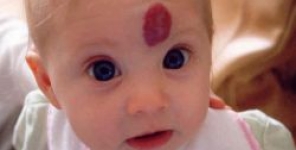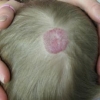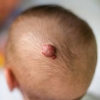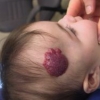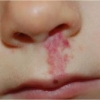Effetto del propranololo sul trattamento degli emangiomi infantili: una singola esperienza in un centro terziario della durata di 3 anni
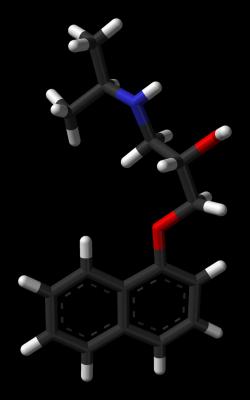 Il propranololo è diventato recentemente una terapia di prima linea di successo per il trattamento degli emangiomi infantili (IHs).
Il propranololo è diventato recentemente una terapia di prima linea di successo per il trattamento degli emangiomi infantili (IHs).
Obiettivo:
Valutare e analizzare l'esperienza degli autori con il trattamento al propranololo per IHs.
Metodi:
È stato condotto uno studio retrospettivo e osservazionale. Le cartelle cliniche sono state revisionate. Per valutare l'esito del trattamento, sono state comparate diverse fotografie digitali utilizzando una scala analogica visiva.
Risultati:
Ottantatre pazienti con un'età media di 5.35 ± 5.15 mesi presentavano 107 IHs che sono stati trattati con propranololo orale nella dose di 2 mg/kg/die. Il miglioramento percentuale medio nella dimensione e nell'estensione è stato di 14.3% dopo 1 settimana, di 45.4% dopo 9 settimane, di 69.1% dopo 21 settimane e di 83.8% dopo 53 settimane dall'inizio del trattamento con propranololo. Otto pazienti (9.6%) hanno riportato lievi effetti collaterali, tra cui ipoglicemia (n = 4), ipotensione senza sintomi associati (n = 2), bradicardia (n = 1) e sonnolenza (n = 1). La ricrescita di IH dopo cessazione del propranololo è stata riportata per 18 pazienti (21.7%). Non vi è alcun predittore significativo della risposta al trattamento e della ricrescita, dopo interruzione del trattamento.
Conclusioni:
Il propranololo è stato molto efficace e sicuro nel trattamento degli IHs. L'effetto del trattamento con propranololo è iniziato rapidamente entro 1 settimana, ed è stato molto promettente, indipendentemente dalle caratteristiche dei pazienti e delle lesioni. Sulla base dell'osservazione degli autori, essi suggeriscono che il trattamento deve essere continuato per diversi mesi dopo la fase proliferativa, affinché si possa fermare clinicamente.
Storia della pubblicazione:
Titolo: Effect of propranolol on the treatment of infantile hemangiomas: a single tertiary center 3-year experience
Rivista: Journal of Dermatological Treatment. doi:10.3109/09546634.2012.761667
Autori: Young Woon Park, Kkot Bora Yeom, Jae Woo Choi, Dong Young Kim, Hyoseung Shin e Kyu Han Kim
Affiliazioni:Department of Dermatology, Seoul National University College of Medicine Laboratory of Cutaneous Aging and Hair Research, Biomedical Research Institute, Seoul National University Hospital Institute of Human-Environment Interface Biology, Medical Research Center, Seoul National University, Seoul, Korea
Abstract:
Background: Propranolol has recently become a successful first-line therapy in the treatment of infantile hemangiomas (IHs). Objective:To evaluate and analyze the authors' experience of propranolol treatment for IHs. Methods: A retrospective, observational study was conducted. Medical records were reviewed. To evaluate the outcome of treatment, serial digital photographs using a visual analog scale were compared. Results:Eighty-three patients with a mean age of 5.35 ± 5.15 months had 107 IHs treated by oral propranolol at a dose of 2 mg/kg/day. The mean percent improvement in the size and extent were 14.3% at 1 week, 45.4% at 9 weeks, 69.1% at 21 weeks and 83.8% at 53 weeks after beginning propranolol treatment. Eight patients (9.6%) reported mild side effects including hypoglycemia (n = 4), hypotension without associated symptoms (n = 2), bradycardia (n = 1) and somnolence (n = 1). Regrowth of IH after cessation of propranolol was reported in 18 patients (21.7%). There is no significant predictor of response to treatment and regrowth after cessation of treatment. Conclusions: Propranolol was highly effective and safe in the treatment of IHs. Effect of propranolol treatment started rapidly within 1 week, and was very promising regardless of patients' and lesions' characteristics. Based on the authors' observation, they suggest that treatment should be continued several months after the proliferative phase is considered to stop clinically.
